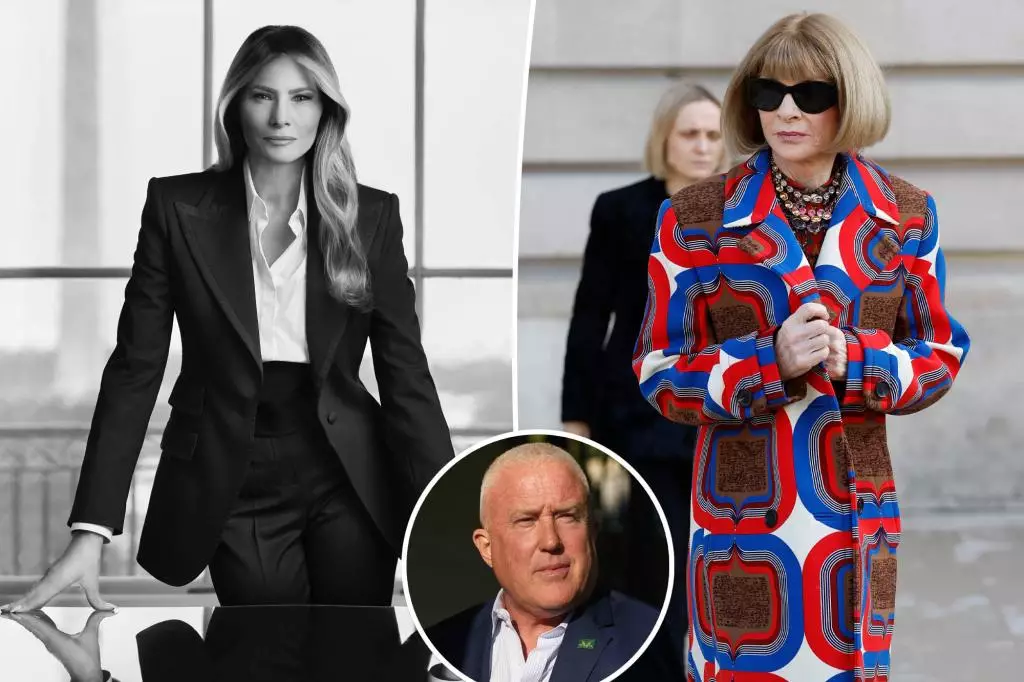The world of fashion doesn’t just reflect cultural trends; it often acts as a stage for political commentary and personal vendettas. This has been exemplified in the ongoing conflict between Melania Trump and the iconic magazine Vogue, which has recently escalated into a scathing public relations battle. Friends of the former first lady, including Bill White, have publicly expressed their outrage over Vogue’s critique of her fashion choices, dubbing it a reflection of a deeper societal contempt. This article will explore the implications of their comments, the nuanced relationship between fashion and politics, and the broader societal impact of media portrayals.
Bill White, a close friend of Melania and a former nominee for US Ambassador to Belgium, has taken to social media to voice the sentiments of many who stand by the former first lady. Describing Melania as “elegant” and “eloquent,” he encourages supporters to boycott Vogue altogether, referring to it pejoratively as “Condé Nasty.” His comments underscore a larger issue at play: the sensationalism associated with political figures and how media representations can shape public opinion. With phrases like “cancel subscriptions,” White’s remarks sound a battle cry for admired figures who feel slighted and marginalized by elite institutions.
Critics of the fashion industry often argue that it embodies a superficial culture—one where appearances can take precedence over substance. Thus, when a fashion powerhouse like Vogue weighs in on Melania Trump’s presentation, it provokes responses that transcend mere aesthetics, delving into the nitty-gritty of identity politics. This incident reignites discussions about how the fashion industry judges public figures, particularly women, and how that shapes public discourse.
Vogue’s remarks about Melania Trump were harsh; they suggested that she looked more fitting on a reality television show than serving as the first lady. The insinuation that her appearance resembled that of a “freelance magician” rather than a consummate public servant points to a tradition within fashion journalism where critiques can carry significant weight. The insinuation suggests not just a flaw in fashion sense but, by extension, an indictment of her role in the public sphere.
Critics argue that rather than offering constructive feedback, Vogue’s editorial choices can perpetuate harmful stereotypes, especially for women in visible positions of power. The juxtaposition between Melania’s public persona and Vogue’s descriptions serves to reinforce gendered critiques that female public figures often face. While fashion is inherently subjective, the narrative that emerges can often shape political outcomes, as public perception is heavily influenced by media portrayals.
The Role of Melania Trump in Fashion
Despite Vogue’s cynical critique, Melania herself has asserted her disinterest in appearing on magazine covers, indicating that she believes her role transcends the superficial. Her response speaks volumes about her approach to public life; she has often sought to differentiate her identity from the glitz of the fashion world. The retort that “we have so many other important things to do” reflects a broader sentiment held by figures who navigate the complexities of public life in the shadow of media scrutiny.
Interestingly, White’s comments concerning her fluency in multiple languages and her business acumen also highlight a disconnect: while fashion appears to prioritize surface-level aesthetics, many supporters wish to elevate the discourse to encompass the intelligence and multifaceted skills of Melania Trump. This suggests that political commitment can be misunderstood through the lens of fashion, reinforcing stereotypes about women and their perceived worth.
The controversies surrounding Melania Trump’s portrayal raise critical questions regarding the broader treatment of women in the public eye. In a society where personal appearance often becomes synonymous with capability, the pressure on women to maintain a flawless façade is immense. The juxtaposition of Melania’s public image against Vogue’s harsh critique reflects both a failure of the fashion world to embrace diversity and a societal tendency to dismiss the achievements of women based solely on their appearance.
As history has shown, fashion is not merely an art form; it is also a mirror of our interests and values. In the case of Melania Trump, the conflict serves as both a symptom and representation of deeper societal divides—where fashion becomes not only a realm of creativity but also one of contention. As the saga unfolds, it raises an important question: how can we create a more inclusive narrative that respects individual contributions while also embracing the complex identities of influential women?
The clash between Melania Trump and Vogue highlights the intricate relationship between fashion, politics, and social perceptions, urging us all to re-evaluate the narratives we embrace about women in power.

